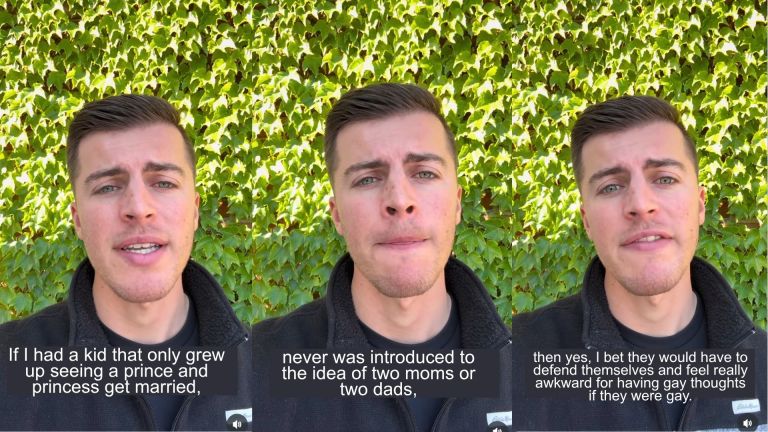
I Noticed A Pattern In Our Workplace Accident Reports, But Nothing Could Have Prepared Me For What I Found
I could have chalked it up to coincidence, but there was a clear pattern here. I had at least ten reports mentioning him. Was he a disgruntled employee trying to get back at the university for firing him? Was it sabotage?
By ![]() Manen Lyset
Manen Lyset

Note: Some names and locations have been changed to protect the identities of those involved.
For the first three years after graduating college, I toiled away as a temp worker, bouncing from agency to agency in the hopes of finding somewhere that would hire me for good. The economy being less than favorable, it was hard to find a job in my field. With student loans eating away at my meager paychecks, I decided it was time to lower my expectations and apply for any permanent position with a reasonable salary, regardless of whether or not it fit my skillset. That’s how I wound up working for the Office of Risk Management at the local university. My duties were limited to the oh-so thrilling administrative tasks of following-up on a backlog accident reports, ensuring they were properly filled out, sorting old files, and archiving them. Just when I thought I was going to drown in the monotony, I started noticing something strange with several reports.
It was Friday afternoon when I realized something was amiss. After a long and boring week, it was taking all my willpower not to doze off on the stack of papers in front of me. Just as I felt my head dipping and my eyelids growing heavy, an answer on the questionnaire I was reading filled me with a deep sense of déjà vu.
Were there any witnesses to this event?
The employee had checked the “Yes” box, and had written a quick description.
[Yes] A man in a red shirt.
I squinted at the simple words on the page. They were so familiar, but I figured my brain was just lagging from end-of-week funk. I’d probably just read the question twice. Without giving it much thought, I finished reading through the document and moved on to the next report.
That’s when the very same question caught my eye.
Were there any witnesses to this event?
[Yes] Adult male in his 40s. Burgundy sweater.
It had to be a coincidence, right?
I checked the first report again and started comparing the two. The incidents had occurred in different buildings and happened about two weeks apart. One dealt with a man suffering from a heart attack, while the other was a simple case of a sprained ankle. The only common elements between the two reports were the man in red, and the fact that his contact information was missing. Usually, we’d get a name and phone number in case we needed a testimony.
I tried to get back to work, but the feeling of déjà vu persisted. I felt like this wasn’t the first time I’d read about the man in red. Unable to focus on my insufferably boring job, I started going through the reports I’d archived earlier that week. Sure enough, a man matching the witness’ description was present in other case files. He was described using a variety of different adjectives, but each painted the same picture: a somewhat tall man with dark hair, in his mid-40s, wearing a crimson sweater and black pants. No contact information available.
[Yes] Middle-aged gentleman in a crimson sweater
[Yes] Stranger wearing red. Approx. 5’9″, brown hair.
[Yes] A guy sitting on a bench. About 45-years-old. Didn’t get his name.
It went on and on.
The fact that the Office of Risk Management hadn’t noticed the reoccurrence didn’t surprise me all that much. I’d been looking at these reports all week and had only been alerted to it because I was reading them back-to-back. The accident reports arrived weeks, months, sometimes even years apart, so I didn’t blame my colleagues for their oversight.
There was only one conclusion I could draw from the bizarre phenomena: the man was somehow the cause of these accidents. Why else would he have been on the scene of so many? If he’d only been spotted once or twice, I could have chalked it up to coincidence, but there was a clear pattern here. I had at least ten reports mentioning him. Was he a disgruntled employee trying to get back at the university for firing him? Was it sabotage?
Questions swirling in my head, I went home for the weekend, relinquishing the investigation to my future self.
![]()
When Monday morning came, I was surprisingly eager to get back to work. Something about the situation had triggered my inner-sleuth. With a pair of fresh eyes, I re-examined the reports, and drew the same exact conclusion: it had to be foul play. Something had to be done, and I felt it was my responsibility to make sure it wouldn’t get swept under the rug. My boss needed to hear about this.
With a stack of reports under my arm, I knocked on Mr. Johnson’s door.
“Come in,” he called, voice muffled by the thick wooden door guarding his office.
I stepped inside and waved meekly. As soon as I saw Mr. Johnson, I lost my nerve. I’m sure he didn’t try to look intimidating, but something about his perpetual scowl and thick arched eyebrows slashed away at my confidence. It’d be unfair to accuse him of being apathetic, but he certainly made no effort to make me feel more at ease. With a flick of the wrist, he invited me to take a seat, while I shakily held the reports against my chest. A deep and calming breath was all it took to give me enough courage to hand him the files. I began pointing out every instance of the man in red, fully expecting Mr. Johnson to take matters seriously.
He looked at the papers quietly, rubbing his temples as though battling a headache. The bitter look on his face as he shuffled through the reports made me even more nervous than I already was. I felt like a kid sitting at the principal office, waiting for a review.
Suddenly, the stern look on his face broke. He started laughing a hardy laugh as he tossed the papers back towards me.
“You shitting me, kid? The school colors are garnet and grey. People wear red all the time to show support. There’s nothing weird about it,” he told me.
“It’s not just the shirt color,” I protested, “Everyone describes the same guy … an older white male with dark brown hair.”
He waved his hand in a dismissive manner, “You just described half the faculty members, kid.”
He had a point, but even if he was right and we were dealing with multiple people, wasn’t it still strange that the contact field was consistently left blank?
“What about his missing information?” I asked.
The boss shrugged at me, “You need to lay off the crime dramas, kiddo. There’s nothing weird about it. More often than not, we don’t get everyone’s contact information, whether they’re wearing red, blue, or hell, rainbow for all I care. It’s not a big deal.”
Unfortunately, he was right. I’d been so focused on the man in red that I hadn’t thought about how we dealt with other witnesses. Often times, several people were listed on the form, but we only collected one or two names. Still, I couldn’t shake the feeling that my instincts were right, even if the boss argued otherwise.
“I’m sorry, you’re right,” I lied, “I’ll get back to work now. Sorry I bothered you.”
I couldn’t risk pressing the matter. The last thing I wanted was for my boss to think I was some sort of conspiracy nut. I couldn’t afford to lose this job. We exchanged a cordial goodbye, and I returned to my office.
It was time for a bit of an ethical no-no. There was only one way to get more information: I had to contact the victims directly, under the guise that I needed clarification on their reports. It wasn’t a complete lie. Their files were ready to be archived and forgotten, but it was the only chance I had. I sent emails to dozens of employees, but only three agreed to meet with me.











